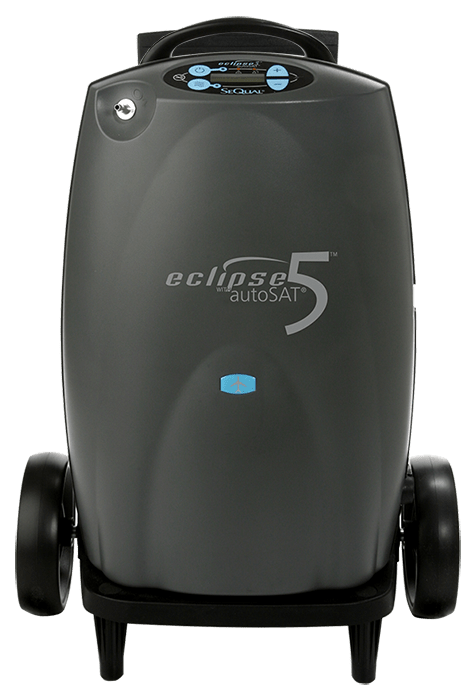
As you begin looking for additional support for your senior loved one who is living at home, it can be easy to feel overwhelmed by the many options. While it is great that there are so many options for assistance, it can leave you feeling confused and unsure of the right choice for your situation. Two common options for senior care services are respite care and companion care. Here’s what you need to know about these two options, including similarities and differences, so you can determine which care solution might be best for your loved one and their needs.
What is respite care?
Respite care is a type of care designed to give a primary family caregiver a temporary break from their caregiving duties. Caring for an older adult loved one is rewarding, but it is also very challenging and takes a lot of time and energy. With respite care, the caregiver has time to take care of other responsibilities or to simply take some time off to recharge.
Respite care involves a trained outside caregiver temporarily providing the supervision and assistance that a family caregiver normally provides for their older adult loved one, such as assistance with activities of daily living (ADLs) like bathing and dressing. It can take place in a variety of settings, including the home, an adult day care, an assisted living facility, or a nursing home. Depending on the provider, caregiver, and setting, respite care can provide supervision, assistance with ADLs, transportation, and participation in activities. This type of care is typically a short-term solution.
What is companion care?
Companion care is just as it sounds: A caregiver comes to an older adult’s home to provide companionship and spend time with them. Many older adults who are aging in place feel lonely or isolated, and some may need some supervision to stay safe or light assistance with household tasks. Companion caregivers provide social interaction to keep the older adult engaged, and depending on the agency and the caregiver, a companion may also help with meal preparation, light housekeeping, and transportation. They do not provide any skilled medical care and typically do not assist with activities of daily living. These services take place in the senior’s home rather than in a facility. Companion care may be a long-term option for people living at home.
Where you can get companion care and respite care
As mentioned in the sections above, these two care types can take place in the home. Companion care is only in the older adult’s home, while respite care can be provided in other settings, including adult day care, assisted living facilities, and nursing homes:
- Adult day cares allow families to bring their older adult loved one to the day care for a few hours during the day while the family caregiver tends to other responsibilities or takes a break from caregiving duties. Some adult day cares primarily offer social activities, meals, and supervision, while others are more medically oriented and can provide nursing care or physical therapy.
- Some assisted living communities offer temporary short-term respite rooms for a daily rate. Services there can include some hands-on personal care assistance, meals, and activities. Assisted living typically does not offer extensive personal care support or medical care. This option could work well for families who need to spend a few days away from home and seniors who have some personal care needs but not significant skilled nursing needs.
- Nursing homes also often accept individuals for respite care at a daily rate. These facilities can accommodate older adults with extensive personal care and medical needs. They provide round-the-clock supervision and skilled care for older adults with significant physical or cognitive needs. This could be an appropriate option for families who need to spend a few days away from the senior’s home and seniors who have significant personal care and skilled nursing needs.
Respite care and companion care services and professionals
Both respite care and companion care provide much-needed assistance to families, but the types of tasks they assist with can differ. Companion care provides nonskilled care to the older adult, mainly focusing on social interaction and help around the house. These caregivers can supervise for safety but typically do not provide hands-on care with ADLs or personal care tasks.
Respite care tasks depend on the caregiver’s training and the setting. Typical respite care in a senior’s home is essentially temporary nonmedical home care: Caregivers can provide assistance with ADLs, supervision, and light housekeeping. If the respite care is intended only for companionship, the professionals may be certified companion caregivers who can help with hands-off tasks like socializing and household tasks. Others may be home health aides (HHAs) or certified nursing assistants (CNAs), who can provide hands-on assistance with activities of daily living, like bathing, dressing, and other personal care tasks. The exact licensed title of the caregiver may depend on your state’s licensing regulations.
Adult day care provides supervision, assistance with ADLs, activities, and meals. Some facilities have licensed professionals who can administer medications as needed according to the senior’s medication schedule. However, it’s important to check with the facility beforehand to confirm that they offer the skilled care your senior needs.
Assisted living communities staff trained caregivers to provide 24/7 assistance with ADLs, activities directors to schedule activities, caregivers to assist the seniors during activities, and nutritional staffing to provide meals. You’ll also find medication management services so your loved one can receive their medicine as prescribed, along with other services.
Nursing homes staff trained caregivers and licensed medical staff. People staying at a nursing home can receive the same types of services as assisted living communities, but they also can receive ongoing skilled nursing care, which is much more limited in assisted living.
Who these services are for
Both care services are designed to help older adults who live at home, but they also benefit the family caregivers of these older adults. Respite care services give family caregivers a break from their caregiving role so they can enjoy some time off or tend to other familial or career obligations while ensuring that the senior has no disruption in their care. The senior also benefits from respite care by having socialization opportunities with caregivers and, potentially, peers if the respite care occurs in an adult day care program or a residential senior care facility.
Companion care services are good for any older adult who lives at home alone. Isolation and loneliness can cause a variety of negative health outcomes, from heart disease to depression, and having a friendly face for a few hours daily can give the senior something to look forward to while enhancing their social connection. Companion care services can also be an excellent bridge to extended services if the family decides to hire long-term home care services in the future.
Making your choice
When choosing between respite care and companion care, first think about why you or your loved one needs the support. If you’re looking for a rest or a break in your caregiving role, respite care would be the best choice. If your loved one is expressing loneliness or they are isolated at home without consistent social connection, companion care would be an excellent solution. Respite care is typically a short-term solution, while companion care may be a more permanent solution. Regardless of what you choose, you can rest assured that your loved one is safe with a trained caregiver.








